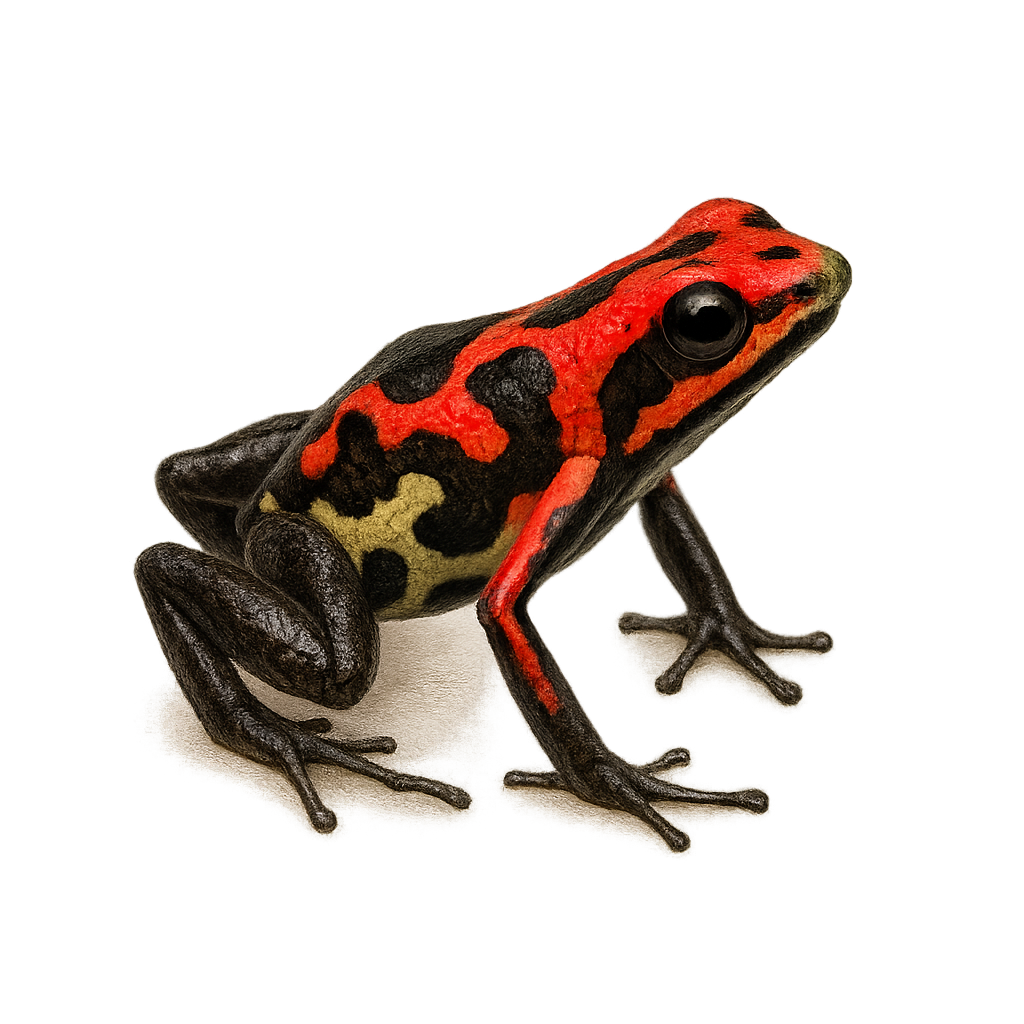Your wildlife photography guide.
Explore the cauca poison frog in detail, study its behavior, prepare your shots.
Where to observe and photograph the cauca poison frog in the wild
Learn where and when to spot the cauca poison frog in the wild, how to identify the species based on distinctive features, and what natural environments it inhabits. The WildlifePhotographer app offers tailored photography tips that reflect the cauca poison frog’s behavior, helping you capture better wildlife images. Explore the full species profile for key information including description, habitat, active periods, and approach techniques.
Cauca poison frog
Scientific name: Andinobates bombetes

IUCN Status: Near Threatened
Family: DENDROBATIDAE
Group: Amphibians
Sensitivity to human approach: Suspicious
Minimum approach distance: 2 m
Reproduction period: November to December
Incubation: 10–14 jours
Births: December to January
Habitat:
Tropical rainforests, undergrowth, marshy areas
Activity period :
Primarily active during the day, with peak activity in the morning and late afternoon.
Identification and description:
The Cauca poison frog is a small, brightly colored frog native to the humid rainforests of Colombia. Its skin features vivid and contrasting patterns, often red and black, serving as a warning to potential predators of its toxicity. This diurnal species primarily feeds on small insects and other arthropods, playing a crucial role in the ecosystem by regulating insect populations. Harlequin Poison Frogs are known for their territorial behavior, with males vigorously defending their space against intruders. Their reproduction involves parental care, with males carrying tadpoles on their backs to suitable water points. Unfortunately, this species is threatened by deforestation and habitat loss.
Recommended lens:
Macro – adjust based on distance, desired framing (portrait or habitat), and approach conditions.
Photography tips:
To photograph the Cauca poison frog, it's essential to have a macro lens to capture the details of its colorful patterns. Look for it in the undergrowth of tropical rainforests, where natural light may be limited. Use a tripod to stabilize your camera and adjust the ISO to compensate for low-light conditions. Be patient and discreet to avoid disturbing its natural habitat. Early morning or late afternoon photography can offer the best light to capture its vibrant colors.
From knowledge to field practice
A species profile helps you understand an animal. In the field, the challenge is often different. Remembering your own observations.
The WildlifePhotographer app allows you to:
• record your personal observations
• note locations, dates, and behaviors
• revisit your field references over time
• build a private and long-term field logbook
The app does not provide observation locations.
It helps you organize what you actually observe, with respect for wildlife.

